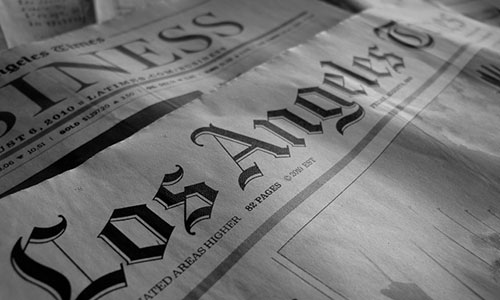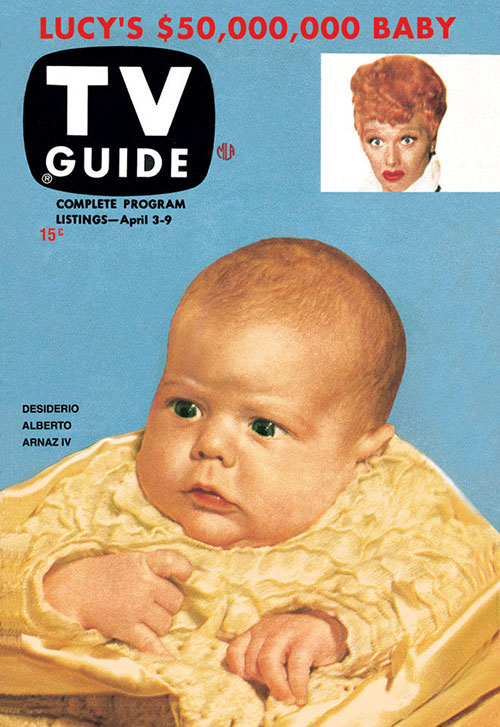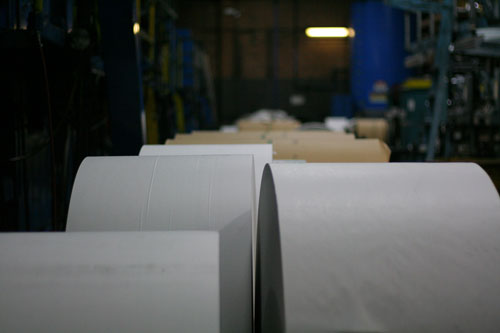Trimmed For Space
As the newspaper industry contracted, so too did the furniture and the newsprint. Let's check out the first victims of the digital revolution.
Editor’s note: Tonight’s Tedium is an updated rerun of a classic issue about the stuff that newspapers get rid of when trying to slim down. Unspoken in this article: Usually, the final step of this process is people. And with the recent sagas of L.A. Weekly and (on the digital side of things) DNAinfo, now felt like a good time to revisit. (If you've read before, keep reading; there's a new section on newsprint.)
Sponsored By … You?
If you find weird or unusual topics like this super-fascinating, the best way to tell us is to give us a nod on Ko-Fi. It helps ensure that we can keep this machine moving, support outside writers, and bring on the tools to support our writing. (Also it’s heartening when someone chips in.)
We accept advertising, too! Check out this page to learn more.
5.5pt

The incredibly shrinking newshole
True story: If it weren't for the 50-inch web, I may not have gotten my first full-time job in journalism.
When I started my job at the Milwaukee Journal Sentinel, the company was one of many taking on the challenge of trying to figure out ways to cut back on the amount of newsprint they needed, with the goal of saving as much money as possible.
One of the ways they could do this was by cutting back on the number of pages used. But another slightly-less-noticeable way involved cutting the width of the newsprint used in creating the issue, a couple inches at a time. In publishing parlance, the width of the newsprint is called the "web," so as a result, newspapers were cutting resources to one web as they were trying to increase them in another.
The Journal Sentinel was one of many newspapers eyeing shrinkage at the time I started working there as a temporary employee in late 2004, with the newspaper deciding to make some bigger changes to their software infrastructure as a direct result of the move.
However, they were far from the last, and definitely not the most aggressive in cutting away the amount of newsprint used. That honor goes to the Wall Street Journal, which went from a 60-inch-wide broadsheet to a 48-inch-wide broadsheet thanks to a single design change, one that effectively cost the newspaper a full column worth of content on every single page.
This decision to cut the width of the literal newsprint being used had some clear costs in terms of overall space, and it also required a lot of planning—getting copies of desktop publishing programs ready for the smaller size, for example, and getting advertisers and designers ready for the big shift.
In the Journal Sentinel's case, they trimmed the design of the newspaper a couple of months before trimming the newsprint, in an effort to ensure that designers and ad-makers were ready when the real change took place.
The result, in a lot of ways, had some good and bad elements. Smaller spaces meant fewer words could get onto the page, and the body type—always a popular target among cranks frustrated with their local newspaper—likely suffered as a result of the changes. But on the other hand, smaller newspapers are also a little easier to carry around—something well-suited read on a bus or train.
In the end, though, it stands out as a reminder that, with newspapers struggling to keep the lights on, everything was on the table—even the newsprint.
"If we don’t do this, there’ll be someone who says to us 'I can’t use the font because I need a 64th fraction because that’s what’s used for German bond ratings.' Or 'I need the discernible inch and degree mark for weather tables.' We diminish the amount of last-minute work by doing all this research up front."
— Typographer Jonathan Hoefler, discussing the research-heavy process that he and Tobias Frere-Jones used in creating their agate typeface, Retina. The face, which is used for tiny copy throughout newspapers, came about after the duo researched 129 different newspapers and thousands of possibilities. It ended up in the Museum of Modern Art. (It should be noted that the typography duo's professional relationship ended in acrimony, sadly.)

The story of the TV Guide, the magazine that couldn't handle 57 channels very well
Putting TV listings inside of a newspaper or magazine was such an obvious idea that organizations were stumbling over themselves trying to figure out a way to jump on this trend. The national magazine TV Guide wasn't the first to the idea, but it came along early enough that it may as well have berthed the trend itself.
For most of its history, TV Guide was as a small, chunky printed manual that changed every week. It had a handful of interesting stories, but it ultimately served the purpose of telling people what was TV for the week ahead. Like the stock tables, it was in many ways the ultimate example of a publication serving a specific need, well. It even made room for buzzy covers, such as the photo of Desi Arnaz, Jr. that adorned the magazine's first issue at a time when his parents, Lucille Ball and Desi Arnaz, had just built a significant amount of buzz for scheduling the boy's birth at roughly the same time Ball was giving birth on television.
"Because that cover was so widely seen, everyone thought I played Little Ricky, and that's stuck with me throughout my life," the younger Arnaz recalled in 2013.
Problem is, technology quickly began to make a printed guide of television listings obsolete. The problem first surfaced in the 1980s, when cable channels became so diverse and varied that it was eventually impossible to get all of them in. At first, TV Guide took the agate strategy to heart—it made the type smaller to make for extra room for the additional listings. The problem was, the new listings kept coming. When 57 channels turned into hundreds and cable companies began adding listings of their own to their offerings, TV Guide was forced to do a complete rethink.
In 2005, the magazine evolved away from listing TV shows into something akin to a mass-entertainment magazine—not that there weren't already enough of those around on the shelves.
"TV Guide is a mess," media executive Jamie Korsen told USA Today in 2005, in response to the plan. "The printed version has no relevance. It's an antiquated brand that resonates primarily with an audience of people 50-plus who grew up with the publication. It has virtually no relevance to the general population mainly comprised of adults 18 to 49."
It was a hail Mary move to keep the magazine afloat, and while the magazine didn't die, it hasn't exactly thrived, instead pushing people online or to mobile apps for the listings, its former raison d'etre.
The effort to prime the pump to keep alive what was once the nation's most-popular magazine has been a challenge—a cycle of company sales and redesigns. Highlighting the complicated state of affairs around this vintage publication: These days, the magazine is a completely separate entity from the website, with two different owners operating under the same name. (The wending ownership situation is similar to what happened to the Prevue Channel, which also at one point was called the TV Guide Channel.)
In a lot of ways, the magazine represents the success and failure of print publications to stay relevant in a world of digital content. This is highlighted by the fact that many newspapers, which published TV guides of their own, have also gotten rid of them.
In an era when you can watch what you want, when you want, there's no good reason for TV Guide to exist. But, by a thread, it still clings on.
"I don't want to have to fire up my computer and go online and then start hunting through."
— Sheldon Lang, a doctor and former Barron's subscriber, discussing his reasons for dropping his subscription back in 2006. Long story short: the financial newspaper dropped its stock listings. When newspapers get rid of stuff—as they did, en masse, during the latter half of the last decade—often the pain is most acutely felt by readers who depended on the resource. They complain a lot, which is a strategy you should use when you're not getting what you want.

(span112/Flickr)
The surprisingly tense state of newsprint manufacturing in 2017
The reason why all this work has to go into cutting down on the amount of newsprint used has much to do with the price of newsprint, and the bad news is, the situation is very much not improving.
Globally, newsprint prices have been on the rise significantly, which has further created challenges for many newspapers around the world. A Financial Times report from last December noted that newsprint from the U.S. had risen to a price of $600 per ton, a jump of $40 from February 2016.
This, of course, creates a symbiotic relationship between paper manufacturers and newspaper publishers. It’s too expensive, therefore newspapers use less of it. And with an obvious escape hatch—that being the rise of digital publishing—there’s not exactly a strong reason to stick with paper for many publishers.
A September 2017 analysis of the paper industry by Great America Group notes how this decline in paper use is negatively hurting the paper industry.
“Newsprint continues to suffer the most due to falling demand from newspaper as a result of consumers shunning physical newspapers in favor of digital media,” the report states.
(Ironically, the report notes that one digital factor has been a major positive for the industry: The rise of Amazon has meant a surge in demand for paper for packing purposes.)
The result, however, has been a major stressing factor for many newspapers, and the tension between paper producers and publishers is at an all-time high.
Case in point: This week the News Media Alliance, a group that represents more than 1,100 small-town newspapers in the U.S., took aim at a specific paper mill, the North Pacific Paper Company (NORPAC), for its actions in fighting imported newsprint from being used in the U.S. The paper mill’s claim? The newsprint from Canada and other countries constitutes “dumping.”
The alliance took this approach in no small part because the U.S. Commerce Department has gotten involved, and may put a 50 percent tariff on newsprint coming into the U.S. from Canada. The alliance attacked NORPAC’s owner, One Rock Capital Partners, for taking advantage of the current trade climate to score a short-term financial gain—and threatening the existence of small-town papers in the process.
“This attempt by a Wall Street hedge fund to utilize the trade laws for a short-term return is inconsistent with the views of the broader U.S. paper industry, and is being pursued without any consideration for the significant negative impacts on news publishers serving readers in thousands of small U.S. cities and towns,” argued David Chavern, the alliance’s president and CEO.
(The Commerce Department will make its decision on the issue next month.)
It’s often forgotten about in all the chatter about the decline of newspapers, but there are raw materials that go into these things, and when it’s not cost-effective to use those raw materials, big problems occur. Just wait until the ink industry comes knocking.
Despite the moves in recent years to cut down on the newsprint used throughout the paper, some common newspaper pages haven't gone the way of the dodo just yet.
One of those features is the Mini Page, a kid-focused concept founded by former school teacher Betty Debnam in 1969. The format—a tabloid-sized handout that embedded inside of the main newspaper, often in the comics section—became so popular that more than 500 newspapers published the syndicated feature. Without much fanfare, Debnam had created a feature that stood the test of time.
Well, until recently. The feature, which Debnam had sold off to Universal Uclick in 2007, recently changed up its look and feel in an attempt to "modernize" the syndicated offering. (You can see the result here.)
“This new version maintains the kid-friendly, newspaper look and feel of The Mini Page in a more contemporary treatment," current managing editor Lisa Tarry told the Brainerd Dispatch of the change.
It's crazy to consider the idea that even a tool designed to get children to read is cutting back in the face of strong headwinds, but here we are. There's nowhere else to cut.
:format(jpeg)/2017/12/tedium120717.gif)
/2017/12/tedium120717.gif)


/uploads/ernie_crop.jpg)